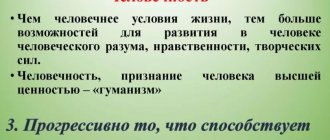Many are often faced with the question: allegory - what is it? The meaning of the word allegory must be sought from the Greeks; translated from their language, allegory means “allegory.” If we define this concept, then allegory is an artistic technique, the essence of which is to express an abstract concept through a concrete, obvious image.
Probably the most common example of an allegory is the image of death in the form of a skull and crossbones, or a figure in a black robe with a scythe. Allegory images have been widely used since the Middle Ages and the Renaissance by artists on their canvases until the 9th century. In modern art, interesting allegories are used much more masterfully for a more subtle, invisible expression of the meaning of the work, allowing the viewer to catch the hidden hint of the author himself. This is the role of allegory.
Description of the allegory
Allegory is the transfer of an abstract concept using a concrete image. For example, a skeleton with a scythe is a symbol of death, and a dove with an olive branch is a symbol of peace.
The term comes from the Greek word αλληγορία - allegory.
Allegory is the expression of the abstract, abstract content of thought (concept, judgment) through a concrete (image), for example, the image of death in the form of a skeleton with a scythe, justice in the image of a blindfolded woman with scales in one hand and a sword in the other. Thus, in an allegory, a specific image receives an abstract meaning, is generalized, and a concept is contemplated through the image.
In an allegory, abstract concepts (virtue, conscience, truth), typical phenomena, characters, mythological characters are most often used - carriers of a certain allegorical content assigned to them (Minerva is the goddess of wisdom), an allegory can also act as a whole series of images connected by a single plot . At the same time, it is characterized by an unambiguous allegory and direct evaluation, fixed by cultural tradition: its meaning can be interpreted quite straightforwardly in the ethical categories of “good” and “evil.” Allegory is close to symbol, and in certain cases coincides with it.
Allegory and personification
Personification is the transfer of human qualities to inanimate objects or abstract concepts. For example, F.I. Tyutcheva: “The azure of heaven is laughing.”
Personification does not mean that the author is necessarily using allegory. But no one forbids using these techniques simultaneously.
For example, in the novel by L.N. Tolstoy’s “War and Peace” there is a famous episode where Prince Andrei Bolkonsky looks at an old oak tree and attributes his experiences to it: “With his huge clumsily, asymmetrically spread gnarled hands and fingers, he stood like an old, angry, contemptuous freak between the smiling birches. Only he alone did not want to submit to the charm of spring and did not want to see either spring or the sun.” Here the tree is endowed with human characteristics and serves as an allegory of human life.
Examples of allegories in literature
A typical example of the use of allegories is in fables. The most famous in our country are the fables of Ivan Krylov. In each of them, animals are shown as the main character or characters, but we immediately understand who and what the author wanted to tell us about.
For example:
- the bear is good nature, strength and limitations;
- the fox is associated with cunning, arrogance and flattery;
- the donkey shows stubbornness, stupidity and stupidity;
- a pig or a monkey shows us ignorance.
In I. Krylov’s fables, one can most often observe a donkey, since it is more endowed with human vices - stupid, stubborn, stupid. But one animal does not always contain several allegories. For example, a bee represents hard work. The author also associates representatives of people of different social groups with animals.
Thus, the old Leo in the fable “The Education of the Lion” identifies the image of the king. It is his upbringing that he entrusts to a stranger, since he himself cannot teach him how to manage his own state, he does not know how to essentially lead himself. As a result, the Lion Cub grows into a ruler completely alien to the people.
Moreover, the image of the Lion Cub can be clearly traced to Alexander I.
Mikhail Saltykov-Shchedrin also wrote fables in which he revealed the essence of man. For example, in “The Wise Minnow” he describes a liberal using a small fish - a baker - as an allegory. Some people, like this little fish, don’t care about anything except their own lives. They have also isolated themselves from society, depriving themselves of all the joys of life, and in the end they do not benefit anyone.
This is a weak person who refuses to fight for his life and rights. Saltykov-Shchedrin shows us that such people cannot be called citizens, since they are just small, cowardly and useless fish. He believes that such people sit in their positions in vain, and also includes passive, indifferent people who do not benefit society at all.
But not only animals show the essence of time; sometimes authors choose a person as the main character. Having created a specific situation, they expose human vices. Does such comparison in literature help the reader?
Saltykov-Shchedrin is known for his ardent statements for the abolition of serfdom, which is why he ridiculed the gentlemen who directly depended on the “dirty and uneducated” men. Their helplessness is also shown in the fairy tale “How one man fed two generals.” They have completely forgotten how to do anything on their own, all that remains is the ability to “play bullets, eat and scold men.”
Allegory in the works of Russian poets
Many Russian poets use tropes, allegories, metaphors and other methods to convey feelings, artistic expression and style of a work. In the fable “The Dragonfly and the Ant,” it is not the actions of insects as such that are clearly visible, but of people. Some do nothing, relying on others.
And others work tirelessly to ensure a decent future for themselves. Therefore, this is a great way to show lazy people who don’t think about anything. Often, through allegorical statements, authors reveal a deeper philosophy that sometimes cannot be expressed in plain text.
This kind of allegory significantly enriches and saturates our speech.
Allegory: where is it used?
Of course, allegory is most often used in fairy tales and fables. But sometimes quite serious works contain a certain hidden meaning that not every reader is able to grasp. For example, N.V.
Gogol shows us Sobakevich, Lyapkin-Tyapkini or Plyushkin in just this image. D. Fonvizin talks about Prostakov, Pravdin, Starodum. It is no coincidence that each hero is endowed with his own surname.
It is also a way of hidden allegory that we must understand.
Fiction, just like painting, music or sculpture, reflects life with the help of certain images that the author of the work is trying to convey to us.
Thanks to the huge variety of language and ways of speaking (metaphors, hyperbole, personification, irony), we can read, see and hear the hidden notes that the author is trying to convey, as well as understand the depth of feelings and experiences.
Moreover, allegories are found even in religion. As a rule, all parables are written in such a way that a person understands what exactly they are trying to convey to him.
What is the difference between an allegory and a metaphor?
The question often arises: what is the difference between metaphor and allegory? How and when is allegory or metaphor used correctly? Let's figure it out.
A metaphor is an expression (or word) used in a figurative sense. For example, golden hands, the clock is ticking.
Allegory and metaphor are similar to each other in that both of these concepts are built on associations, that is, a parallel is drawn between the named object and its definition. However, the allegory is much deeper and richer in its meaning and complexity.
A metaphor depicts to us any events or states, for example, the onset of old age through the metaphor “autumn has come”, the impossibility of returning everything back - “the path is overgrown”, a description of a quiet, motionless forest - “the forest is thoughtful.”
A metaphor is a kind of comparison, effective, apt, sharply noticed, thanks to which the work becomes alive, expressive and the reader’s imagination begins to work.
In turn, an allegory can take the form of an entire work (this is clearly seen in the example of fables and parables). Using this literary device, the author illustrates an event, a story, and makes us understand his attitude to what happened.
The figurative meaning in a metaphor fits into one word, but in an allegory it covers an entire thought. Phrases serve as metaphors, and proverbs serve as examples of the simplest and shortest allegories (“Better a bird in your hands than a pie in the sky”).
Metaphor and allegory - what is the difference?
Allegory refers to metaphorical tropes when one phenomenon is depicted and characterized through another.
Sometimes an allegory in literature is called an extended metaphor. In an allegorical work, all images should be perceived in a figurative sense - as interconnected metaphors.
But not all experts agree with the interpretation of allegory as an extended metaphor. They point to the main difference: metaphor is based on comparison, on the similarity of phenomena, and allegory is based on allegory, allusion.
What is allegory in literature
Allegory has been found in literature since antiquity. A striking example is Homer’s poems “Odyssey” and “Iliad”, where the allegorical image of Odysseus is identified with the inquisitive, inexhaustible thought of man, and his wife Penelope is identified as a touching and indisputable image of love, fidelity and female devotion.
In the works of the ancient Greek fabulist Aesop, an allegory was used: when describing animals, the author ridiculed and flaunted human greed, pretense and stupidity. Later, his style of allegorical presentation would be called Aesopian language.
In addition, there is an allegory in the literature of the Middle Ages; in the texts of the Holy Scriptures, religious hymns, parables, and the works of the Fathers of the Church, many images have an allegorical motif. Many allegories came to us from the Bible: Judas symbolizes betrayal, and the Mother of God symbolizes sinlessness, moral purity, impeccable morality and innocence.
Many allegorical examples can be found in the works of Verhaeren, Ibsen, France, in Dante’s brilliant work “The Human Comedy”, in Shakespeare’s sonnets, and Shelley’s poems. It is worth considering the fact that in the works of the 9th-20th centuries. During the period of rationalistic philosophical traditions, allegory was practically not used at all.
By the way, Russian authors could not do without allegories. Zhukovsky's ballads, Saltykov-Shchedrin's satire, works by Ilf and Petrov, Chekhov, Mayakovsky's poems, Krylov's fables are an inexhaustible source of witty and subtle allegories.
Examples of allegories from literature
In almost any fairy tale you can find an example of an allegory, which is expressed in the images of animals. In such literary texts, the fox is always cunning, the hare is cowardly, and the bear is strong and stupid.
I. Krylov is also a master of allegory in the Russian language. In his fables you can find many animals to which negative human qualities are attributed. The donkey represents stupidity and stubbornness, the wolf represents greed.
Very often allegory can be found in poetic works. An example is B. Pasternak’s poem “Winter Night”. It describes a harsh February snowstorm outside and a lone candle burning on a table inside. And if you read his lines verbatim, it seems that the main theme in this text is the theme of nature, the elements. But in fact there is an allegory here:
- winter is not only a season. She personifies death, separation, and the merciless regime of the Soviet state.
- a candle is an allegory of hope, a bright ray in a dark kingdom. Despite all the adversity, there is always hope for a positive outcome.
- crossing of arms, crossing of legs - a romantic relationship between two lovers
Rice. 1. Parsnip Poem Winter Night








